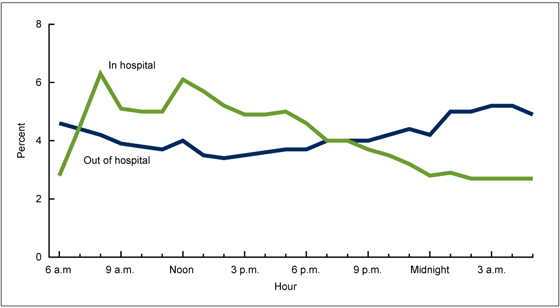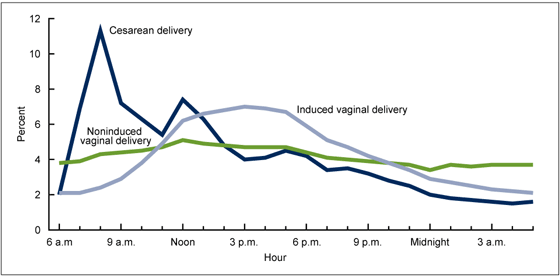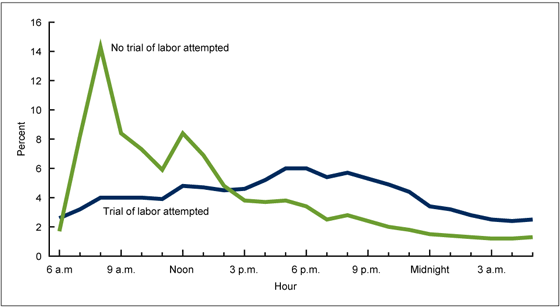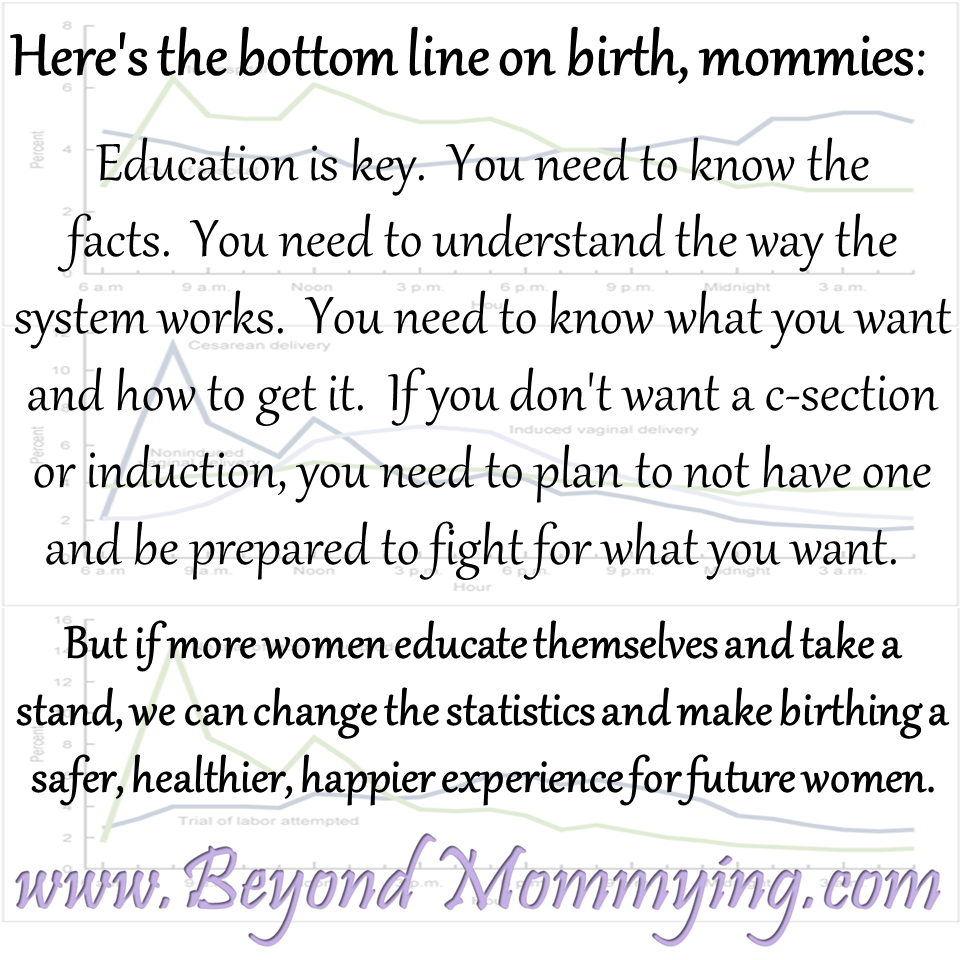While we STILL wait for baby to decide to join us on the outside, I’ve had lots of free time to look for signs that s/he may be coming (okay, maybe not lots since I do have three other kids to care for, but enough to do some digging!)
Of course, we have our Thursday thing that I’ve discussed previously and every Thursday that has come and gone has put me into a frustrated stupor as I contemplate another WHOLE week of being pregnant.
Then there’s the notion/old wives’ tale that most babies are born on the full moon, so I took a look at the current moon cycles and we just missed the full moon (which occurred Saturday) BUT, none of my other babies have been born on the full moon either. Both Honeybun and Doodle were born on the new moon and Sugarplum was born on the 3/4 heading towards new moon.
Ironically, looking at the moon calendar, this coming Thursday is going to about a 3/4 moon heading towards the new moon, so maybe that will actually be my day. Plus it’s the 3rd and Honeybun and I both have birthdays on the third so maybe that is our day, the day it’s always been meant to happen?!?!
Irregardless of the day baby chooses to join us, though, there is one thing I am pretty much certain on: s/he will be born at night or in the early morning.
Both of my girls were born late at night (10:12 and 11:37) after laboring all day and most of the night before. Doodle was born at 9:02 am after laboring all night and most of the afternoon/evening before.
But more importantly than my previous experience, is the fact that most babies are born at night. Some people (like this horribly written Today article) have tried to claim the night-time birth idea is indeed a myth, but statistics don’t lie (they can just be horribly misinterpreted) and a recent report by the CDC which analyzed the time of day most babies were born in America during 2013 (which would include Doodle!) makes one thing clear: when left alone, the majority of babies choose to be born at night!
How is it that I can glean this notion from the same data where the Today article came up with the clincher “Most babies are born at night, right? Turns out a new study is busting that birth myth.”
Easy: While the majority of in-hospital births do indeed happen during the day time (spikes at 8 am, noon and 5 pm), out of hospital births happen most frequently between the hours of midnight and 8 am (graphs below from the CDC report). When we’re talking about when babies are CHOOSING to be born, this clearly shows that babies left alone to come on their own without intervention, induction or c-section will mostly choose to come during the night and early morning hours.
 So calling it a “myth” that more babies are born at night is misleading. Yes, today most babies are born during the daytime but that’s because we are screwing with the natural system and therefore skewing the results.
So calling it a “myth” that more babies are born at night is misleading. Yes, today most babies are born during the daytime but that’s because we are screwing with the natural system and therefore skewing the results.
 With 98% of births occurring in hospitals and somewhere around 1/3 of all births now being c-sections which are most likely to occur between 8 am and noon, doesn’t it make sense the stats would show more daytime births? Plus nearly 1/4 of all births are now induced and as the above graph shows, those births tend to peak between noon and 6 pm (isn’t that convenient for the doctor?!) which makes sense since women usually enter the hospital for induction either late in the evening or early in the morning and labor takes time.
With 98% of births occurring in hospitals and somewhere around 1/3 of all births now being c-sections which are most likely to occur between 8 am and noon, doesn’t it make sense the stats would show more daytime births? Plus nearly 1/4 of all births are now induced and as the above graph shows, those births tend to peak between noon and 6 pm (isn’t that convenient for the doctor?!) which makes sense since women usually enter the hospital for induction either late in the evening or early in the morning and labor takes time.
So whereas some may interpret the data to debunk the nighttime baby notion, I take it to mean we are screwing with the system too much! WE (or doctors, really) are changing when babies are born, not the babies themselves. When left alone, most babies still want to come at night as the first graph shows.
So what about the “noninduced vaginal delivery” line on the second graph? Doesn’t that also show more babies being born during the daytime without intervention? At first glance yes, yes it does. But after further investigation of the full report, I realized that that line does NOT mean intervention free, it means that labor started on its own, it in no way means labor was left alone entirely. My guess is a good portion of those women still had their labors augmented with Pitocin or by having their waters broken in order to speed up labor.
And we, of course, can’t leave out this beauty of a graph comparing c-section deliveries with or without trial of labor:
Which basically tells us: If you schedule your c-section you’ll have a breakfast or lunch time baby and if you do labor and try for a vaginal birth and end up with an “emergency” c-section, you’ll most likely have a dinner time baby. (Again, isn’t that all just so convenient for the doctor?)
Here’s my bottom line, mommies: Education is key. You need to know the facts. You need to understand the way the system works. You need to know what you want and how to get it. You need to be aware that statistics don’t lie and if you don’t want a c-section or induction, you need to plan to not have one. You might have to fight for what you want (a lesson I learned the hard way). You have to realize your doctor may not always be on your side or have your best interests in mind. But if more women take a stand and say “not me!” we can change those statistics and make birthing a safer, healthier, happier experience for future women (more on my personal birth beliefs).
Please bear in mind: I am in no way anti-c-section, I know that c-sections save lives every day and am thankful to have many beautiful women in my life that are proof of that (like my dear friend, Tess who was saved by c-section twice) but I know more women we had c-sections out of convenience or fear (like another good friend of mine, Liz), many of whom were pressured into it and some who don’t even know WHY they needed a c-section . I see c-sections as a growing epidemic as they have become the most performed surgery in America and (coincidentally?) maternal mortality rates are on the rise.











I agree with your statement that data can be interpreted or spun depending on an agenda. My doula pointed out that 1/3 of births are via C-section. She also noted that back in the day, 1/3 of women or babies didn’t survive birth. So there is an argument to say that C-sections are saving people who would have otherwise not survived. I think it’s uncommon now to schedule a C-section, based on the information I gathered. But maybe my doctors were just ethical.
Also, an interesting personal note- the hospital I delivered at sells themselves on not pushing “assistance.” They really pushed back on my requests for pain management. They want their stats to reflect their priority at promoting natural labor and delivery. I think the climate is changing.
Jen, I am so glad that you were able to birth at a place where you felt comfortable and safe and with a supportive team, I really wish more women had those choices these days. And honestly, I think if they did, the c-section rate would go down. With modern medicine, many of the maternal deaths suffered “back in the day” could be treated or avoided altogether, without a c-section. I’m not convinced c-sections are the cure all and statistics do show that the rate is too high and harming mothers and babies.